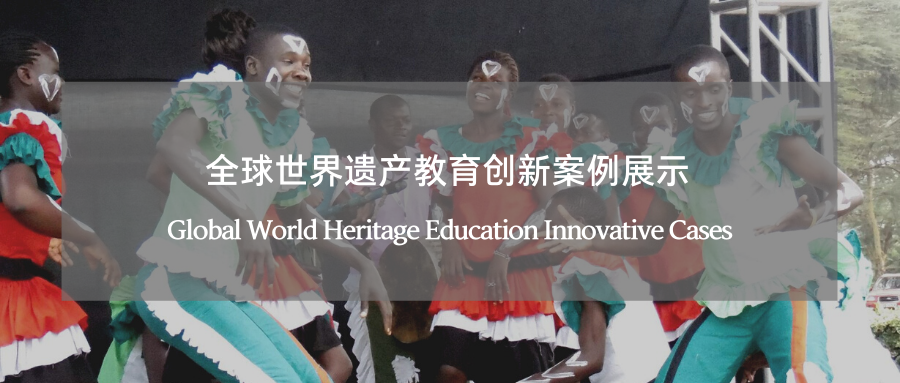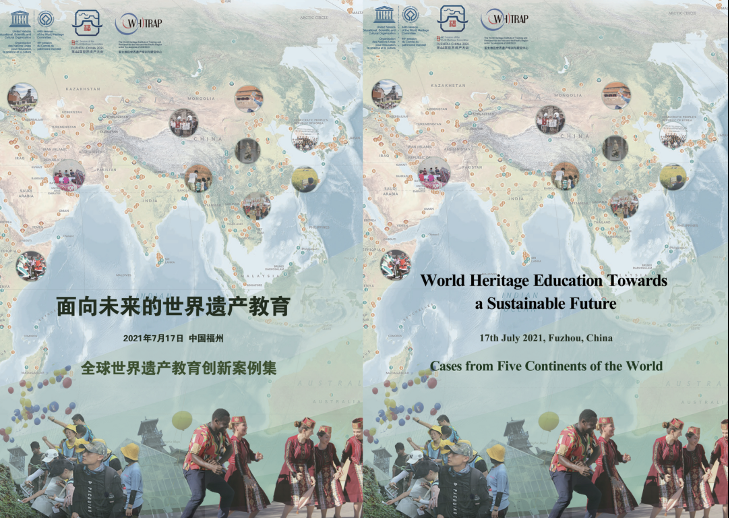| Outstanding Cases VOL.3 | Isututi Dance (Kenya) and LiangLiang’s World (China) |
| PublishDate:2021-10-24 Hits:4577 |
I. Background World Heritage Education (WHE) is not only one of the most important ways to connect people to world heritages, but also a key to a creative solution for sustainable development of the heritage sites. With the accelerated development of the Internet technology in recent years, more and more innovators have accessed the heritage education field. They have not only promoted the regeneration of the contents and methods of heritage education, but also make it possible for heritage education to break existing boundaries and modes.
To correspond to and promote this reform, WHITRAP initiated this Global Innovation Cases of World Heritage Education in the hope to have a fine collection of forward-looking exemplar heritage education cases. The aim is to promote the sharing of relevant international experience and future cooperation, and contribute to the comprehensive and sustainable development of heritage sites. Cases were expected to be characterized essentially by global demonstrativeness which was further supported by four professional criteria of innovation, technology, cooperation and sustainability.
After a month-long application, candidate cases entered the selection stage and were officially presented at the 44th Session of the World Heritage Committee. This initiative received enthusiastic responses from all parties, and WHC’s official website also published WHITRAP’s global call for case studies on World Heritage Education. This initiative has received warm responses from all parties. Nearly 100 WHE innovation cases were collected from five continents of the world within a month, highlighting the emerging trends in various innovation fields and providing an important reference to explore the topic in the future. With reference to future development and model innovation as a global model, five qualities of future-oriented WHE are summarized as follows:
1) Enhancing social inclusiveness and cohesion via heritage education especially for the youth based on heritage protection;
2) Promoting multi-disciplinary integration through cross-boundary innovations and exploring a new model of multi-party cooperation through internal and external combination;
3) Exploring new heritage education concepts and methods according to local conditions via creativity and technology;
4) Rationalizing the use of Internet and digital technology to involve more people online and offline in heritage education;
5) Discovering heritage values and using education as an empowering tool to promote the creative innovative and sustainable development of heritage sites.
Based on the five qualities, the collection of 10 outstanding cases will present their innovation and exemplary significance. Those cases demonstrate a wide range of possibilities of the future WHE from the perspectives of life-time education, digitalization, cyber technology, cultural tourism development, world peace, social integration and philosophy, representing the emerging trends in various innovation fields. The thought-provoking cases provide a guideline for us to explore possible actions for the future WHE development. In the series of the presentation of outstanding cases, we will focus on the educational activities for world heritage sites or specific heritage values, presenting their practical effects and valuable lessons over the past five years.
In the last issue, from the two cases from China and the US, we have learned their experience of “promoting multi-disciplinary integration through cross-boundary innovations and exploring a new model of multi-party cooperation through internal and external combination”. This issue will involve two cases: “Role of the Intangible Cultural Isututi Dance Heritage in Preserving the Kakamega Natural Rainforest” (Kenya) and “LiangLiang’s World: “Picture Book+” Borderless Heritage Education Concept” (China). Let’s discover their innovative features in “exploring new heritage education concepts and methods according to local conditions via creativity and technology”.
II. Presentation of Outstanding Cases VOL.3
1. Role of the Intangible Cultural Isututi Dance Heritage in Preserving the Kakamega Natural Rainforest (Kenya)
1) Introduction
Dance heritage is important to cultural heritage because it is an art that is passed down through time and place by practitioners. The Isukuti dance is one dance that has been used to tackle issues of environmental conservation, wildlife preservation, peace building and forest protection by the communities living around the forest. The Isukuti dance is a traditional celebratory performance practised among the Isukha and Idakho communities of Western Kenya. It takes the form of a fast-paced, energetic and passionate dance accompanied by drumming and singing. An integral tool for cultural transmission and harmonious coexistence between families and communities, it permeates most occasions and stages in life.
Isukuti dance of the Idakho and the Isukha has been Listed by UNESCO in the list of Intangible Cultural Heritage in Need of Urgent Safeguarding. This is due to the western music influence and the incorporation of guitars, pianos, and violins etc. that have widely been embraced by the young people in Kenya. Transmission of Isukuti dance is presently weakening and the frequency of performance is diminishing. Lack of funds and the necessary materials to make the instruments and costumes also present an obstacle. Finally, many composers prefer to work in more commercial genres, and audiences frequently substitute contemporary entertainment for traditional Isukuti dances.
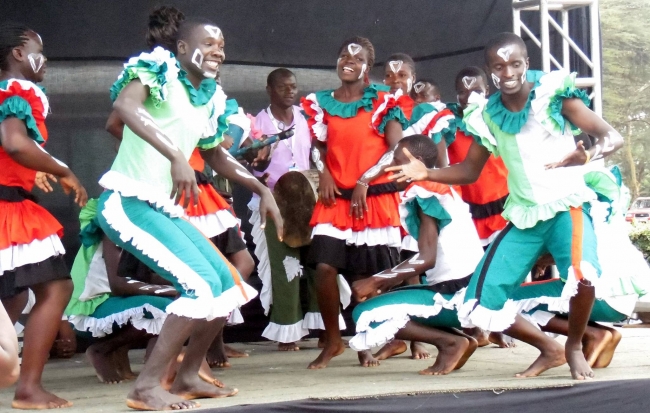 Kenyan residents performed Isukuti dance
2) Innovation
After years of effort, the dance has earned national recognition and every time there are events happening in the country, Isikuti dancers must be incorporated in the celebrations. The Kenya national commission for UNESCO also started music and dance cultural celebrations to promote culture and our traditions through music and dance. It is good to note that the winners of the competitions were fully sponsored to entertain guests during the Kenya week in Paris, France UNESCO headquarters. Most winners have been the Isukuti dancers and they have had the opportunity to showcase this unique dance to the world thanks to the listing by UNESCO.
3) Collaboration
Collaborations have been made through organizations such as UNESCO by organizing cultural events incorporating the Isukuti dance in the Kakamega forest and awarding the winners while documenting it through our mainstream media and social media postings has been very pivotal in promoting heritage education. Kenia Voluntary Service Organization (KVSO) has also been promoting the Kakamega Rain forest and Isukuti dance natural and cultural heritage through the UNESCO World Heritage Volunteers programme where local and international volunteers are brought together to create social actions in the world heritage site while working with the local communities to promote the world heritage site by organizing games, dance competitions, talks and cultural exchanges with the local communities in heritage education on Kakamega and Isukuti dance. The participation in the UNESCO World Heritage Volunteers programme has left Kakamega forest a beehive of activities as the international volunteers centre through the KVSO Kenya organization, who have used social media platforms to create awareness and invite their respective friends and relatives from different parts of the world to have the same experience as them.
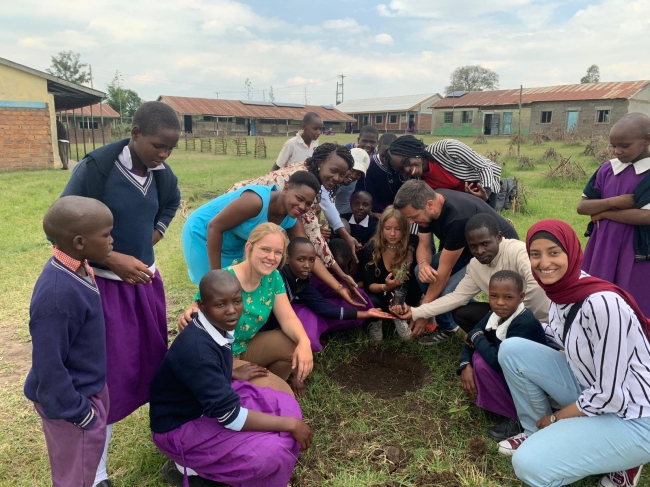 Visitors interacted with local residents
2. LiangLiang’s World: “Picture Book+” Borderless Heritage Education Concept (China)
1) Introduction
On July 6, 2019, the Archaeological Ruins of Liangzhu City was inscribed onto UNESCO’s World Heritage List. As an archaeological museum that comprehensively interprets heritage values of the Site, Liangzhu Museum undertakes the responsibility of public engagement in the preservation and transmission of World Heritage.
Liangzhu Museum promotes the “Picture Book+” Borderless Heritage Education model, with picture books as its main carrier, transforming profound and professional archaeological research results into popular knowledge. The core of this model is youth heritage education, which mainly benefits young people and the groups to which they belong. Focusing on children and teenagers, this model further radiates the influence of Liangzhu Culture to families, schools and communities. Through diversified forms and comprehensive technical methods, the Site can achieve borderless online and offline dissemination at home and abroad.
Picture books express ideas and transmit information via vivid illustrations and concise words, which correspond to teenagers’ cognitive ability and attract their interest. The project created an eight-year-old heroine named LiangLiang, who came from Liangzhu period of more than 5,000 years ago. She tells the story of Liangzhu from the perspective of her peers, which makes the books easy to understand. This is an innovative attempt in the vitalization and utilization of the World Heritage. So far, in the LiangLiang’s World picture book series, three volumes have been published, introducing Liangzhu Ancient City as well as pottery and jade in Liangzhu Culture. The drawings in the picture books simulate the life of Liangzhu ancestors, show every cultural relic in detail and accurately transmit every information point. Thus, the picture books empower the Site in the most intuitive and three-dimensional way, making the World Heritage site alive and introducing it to the world.
 Scenery layout of Liangzhu Museum
2) Innovation
The Programme takes “Picture Book+” Borderless Heritage Education as its concept, and its innovation points are listed below:
· Borderless in terms of time
The “Picture Book+” IP series tries to realize the zero-barrier communication between modern people and Liangzhu ancestors of more than 5,000 years ago. The books restore an ancient world and its people’s life by carefully treating the shape of each cultural relic, the outfit of each character and the environment of each scene according to the most recent research results. Readers can not only see the pictures and read the words, but also play interactive games and listen to LiangLiang on the podcast. Thus, readers would feel immersed in the Liangzhu world.
· Borderless in terms of space
In order to break the offline restrictions of the World Heritage site, the project posts LiangLiang’s pictures, videos, podcasts and broadcast live on WeChat, Weibo, TikTok, Bilibili, Himalaya and news platforms.
· Borderless in terms of region
Through the “LiangLiang’s Journey” series of educational activities, Liangzhu culture has gone out of Liangzhu and entered schools, communities, bookstores and other cultural places across the province and even the whole country.
· Borderless in terms of function
The concept of “Picture Book+” has broken the traditional framework of museum, and created a new type of cross-boundary the museum with multiple functions, such as editor office (picture book), theater (drama performance), classroom (educational activities) and media center (online and offline publicity).
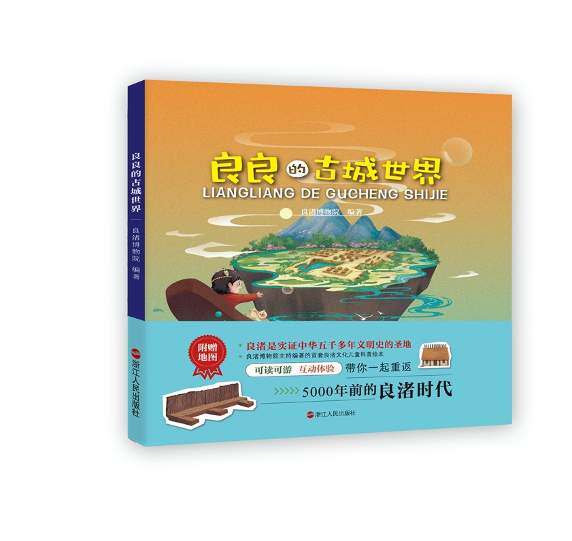 “Liangliang’s World” series of picture books
3) Collaboration
In the “Picture Book+” programme, Liangzhu Museum collaborates widely with local government, schools, bookstores, charities, media agencies, foundations, craftsman studios.
Based on the policy of “poverty relief through culture and intellect”, “LiangLiang’s Journey” has created a new mode for museums and social charities helping cultural construction of rural schools. The project has also encouraged the students of all grades to set up and decorate “Good Book Corners” in order to cultivate their reading habits. After that, Liangzhu First Primary School was invited to join us and the project launched the activity of “Reading One Book Together”. Through inter-school book exchange, students from the two cities can pair up to share their reading experience, and learn to inherit our common cultural heritage together.
In the summer camp cooperated with Liangzhu First Middle School, the project trained the students on archaeology knowledge and communication skills. Finally, they operated the live broadcast independently “Memories from the Stone Age: Liangzhu Ancestors’ Colorful Life”, which got 75,000 views and successfully achieved “re-dissemination” in heritage education.
In addition, the project has created a series of classes entitled World Heritage x Intangible Heritage Lab, in which local craftsmen teach teenagers to craft pottery, jade and other materials. By experiencing crafts from 5,000 years ago with their own hands, participants would have an in-depth understanding of the Liangzhu site.
III. Conclusion
In this issue of the presentation of outstanding cases, two case studies from Kenya and China demonstrate the useful experience of exploring new heritage education concepts and methods according to local conditions via creativity and technology. These programs not only advocate that all young people should receive World Heritage Education, but also arouse their awareness and consciously take the responsibility of protecting our common heritage.
We sincerely wish heritage education practitioners and participants could learn from and get inspired by this presentation of outstanding cases. It would be encouraging to us if the five features summarized above could provide insights to tailor-made innovation practices in the future. The completion of the case collection marked yet another beginning. In the future, we will continue our efforts from here and make endeavors to establish an international network for WHE cooperation and exchange, thus contributing to the innovation of heritage education and the all-around and sustainable development of the heritage sites.
In the next issue, we will present two outstanding cases: “Hello, Forbidden City! Heritage Education Project” (China, Beijing) and “Multi-dimensional Exploration of Children’s Heritage Education——Take Dali Dong Village in Guizhou as an example” (China, Shanghai). We will discover their innovative features in “rationalizing the use of Internet and digital technology to involve more people online and offline in heritage education”.
Contributed by: WHITRAP Working Group
Edited by: He Yixuan, Zhang Yiyang
|
- News | WHITRAP Shanghai and CNR-ISPC bilateral meeting
- News | WHITRAP meets Cité de l’Architecture et du Patrimoine
- WHITRAP Hosting "Workshop on Preliminary Assessment for National Focal Points of the Asia Region" in Chengdu
- WHITRAP Shanghai meets UNESCO
- INTERNATIONAL CONFERENCE PRELIMINARY ANNOUNCEMENT & CALL FOR PAPERS
- Observation of the 46th Session of the World Heritage Committee
Copyright © 2009-2012 World Heritage Institute of Training and Research-Asia and Pacific (shanghai)


